Hands on with the Alienware X51
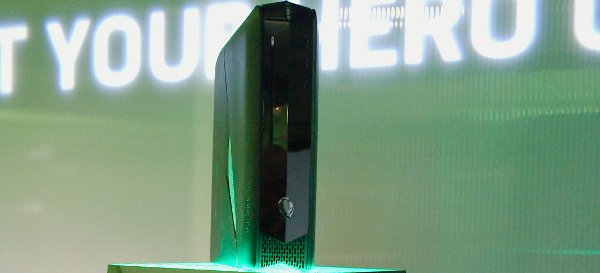
Gaming system specialist Alienware launched its console sized X51 desktop for the second time in London last night. The machine was originally announced a couple of weeks ago in San Francisco, since when we've only seen it in pictures. Now we've played with it for a bit, had a go at building a cheaper alternative and spoken to the team behind it, it's time to gather our thoughts.
The X51 is intriguing. It looks like a media centre, acts like a desktop PC and costs the same as a top end Mac Mini for the most basic of the three specs available. It's on sale now, so who's going to buy it?
The first thing to note about the X51 is that it's a little bigger than I was expecting. When Alienware say it's slightly larger than the Xbox 360 or PS3, they're talking about the first generation designs of those consoles and not the newer, slimmer ones. At 343x318x95mm it has a small footprint for desktop machine, but it's far from the tiniest PC I've seen recently. A Silverstone Sugo SG06 mini ITX case, for example, is 286x220x177mm and has space for double width graphics and the PSU to sit inside. The X51, on the other hand, has a hefty power brick trailing behind it.
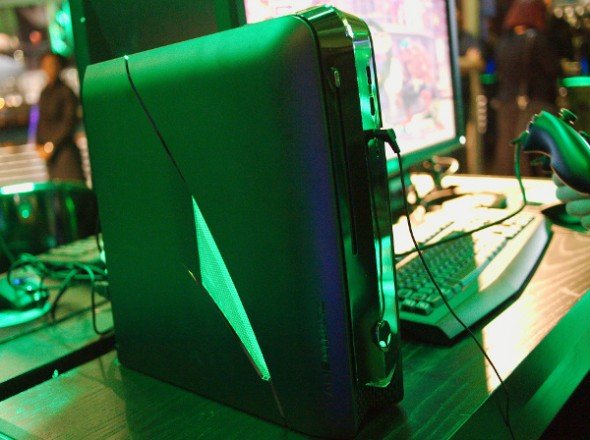
You can fit a double slot graphics card upgrade to the X51, mind, and I'm told that any GPU up to 150W should be fine if you go for the upgraded 330W PSU (it comes with a 240W one as standard). Whether or not there's room for longer cards I won't know until I open one up.
We'll need that information, because the X51 will have to be upgraded at some point. The basic X51, which costs £699/$699, has a Core i3 processor and GeForce GT545 graphics. That's enough to get most games running at 1920x1080, although you'll need to turn down things like anti-aliasing and post-processing effects for smooth framerates in most games. The higher end models comes with GTX555 graphics and cost up to £999/$999. It's a step up from the GT545, but not an enormous one. It is considerably more powerful than the highest spec of a Mac Mini, mind, by a factor of ten in some metrics.
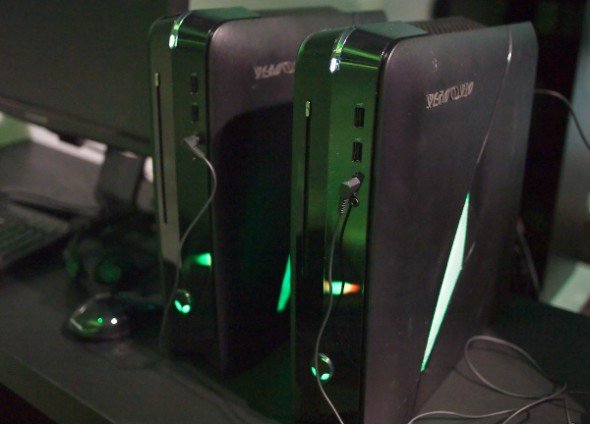
Like a console, the X51 can sit horizontally or vertically. As with all of Alienware's kit there's a lot of attention to detail in design too – so that the illuminated head logo swivels through 90 degrees depending on which way round you've got the PC mounted.
I can't really say how quietly the X51 runs – with all the background noise of a launch event measuring fan noise is impossible. There is a software control panel which can be used to create cooling profiles, though, so you can manually turn down the fans if you're using it to watch a movie.
The biggest gaming news, reviews and hardware deals
Keep up to date with the most important stories and the best deals, as picked by the PC Gamer team.
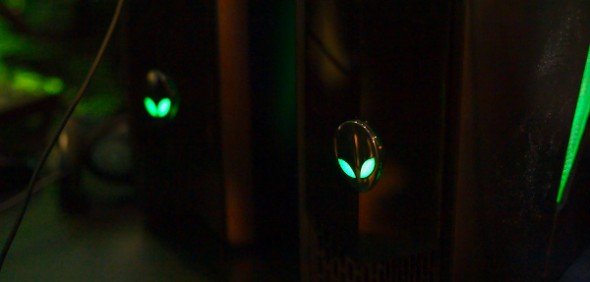
Having played with one for a bit last night, my first impressions of the X51 are good. I like the design and I like the concept. I don't think I'd buy it for myself, but I'm not the target audience. If I couldn't build a PC, didn't want to buy a high end gaming system but did want something with a bit more power than a Mac Mini or a much cheaper Inspiron 620MT from Alienware's parent firm Dell, I think I'd be interested. In other words, it's the sort of thing I might recommend to a family member or friend who's asking me to build a machine for them. Spend a bit more, get it preconfigured, and it should just work out of the box.
Coincidentally, that's exactly the kind of customer that Alienware sees going for the X51 too. It's not being pitched as a media centre or device for playing PC games on the TV as I first suspected. I asked Eoin Leydon, product manager for the X51, whether or not he thinks people will buy the X51 as a replacement for a console.
“We're not going to tell anyone how they should be using it,” Leydon said, “The people who'll buy it are the people who like the look of Alienware machines, but want something smaller for whatever purpose. It works as a media streaming device, but that's not what we see as it's main use."
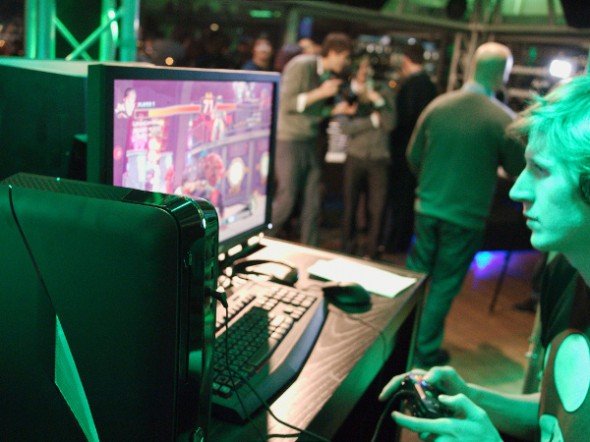
Part of the decision to launch the X51 came from the success of Alienware's other more mainstream product, the M11x laptop. That's relatively low powered, compared to other Alienware notebooks, but is now into its third iteration and has attracted people who wouldn't have bought Alienware before.
“Within the constraints of the form factor for the M11x and the X51,” says Leydon, “We think we're delivering the best gaming performance.”
The price of the X51 isn't outrageous compared to similarly specced machines, and there's less of a price premium than there is for the Mac Mini, but I do wish it had been launched for about £100 less – considering Dell's muscle in the supply chain that shouldn't have been unreasonable. At £599 it would have been a clear recommendation to almost anyone thinking of buying a new PC. At £699 it's going to put off those who really don't want to spend much.
What I do like about the X51, however, is that it will be bought by people who don't consider themselves 'gamers', but it cries out to be played with through the design aesthetic alone. Anything which has the potential to expand the gaming audience is generally a good thing.


